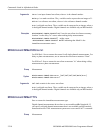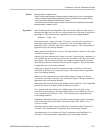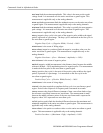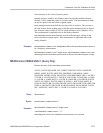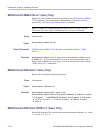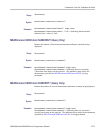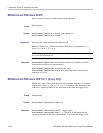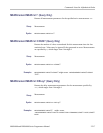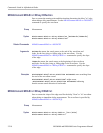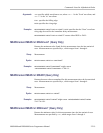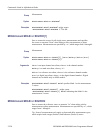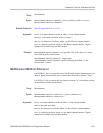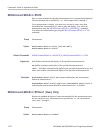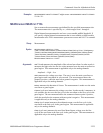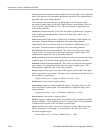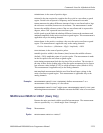
Commands Listed in Alphabetical Order
MEASUrement:
MEAS<x>:DELay:DIRection
Sets or returns the starting point and direction that determines the delay "to" edge
when taking a delay measurement. Use the MEASUrement:MEAS<x>:SOURCE2
commandtosp
ecify the waveform.
Group
Measurement
Syntax
MEASUrement:MEAS<x>:DELay :DIRection {BACKWards|FORWards}
MEASUrement:MEAS<x>:DELay :DIRection?
Related Commands
MEASUrement:MEAS<x>:SOURCE2
Arguments
BACKWards means the search starts at the end of the waveform and
looks for the last rising or falling edge in the waveform. Use the
MEASUremen
t:MEAS<x>:DELay:EDGE<x> command to specify the slope
of the edge.
FORWards me
ans the search starts at the beginning of the waveform
and looks for the first rising or falling edge in the waveform. Use the
MEASUrement:MEAS<x>:DELay:EDGE<x> command to specify the slope
of the edge.
Examples
MEASUREMENT:MEAS3:DELAY:D IRECTION BACKWARDS starts searching from
the end of the waveform record.
MEASUREMENT:MEAS3:DELAY:D IRECTION? might return
:MEASUREMENT:MEAS3:DELAY: DIRECTION BACKWARDS indicating
that the current search direction is backwards.
MEASUrement:MEAS<x>:DELay:EDGE<x>
Sets or returns the slope of the edge used for the delay "from" or "to" waveform
when taking an immediate delay measurement. The waveform is specified by
MEASUrement:MEAS<x>:SOURCE[1].
Group
Measurement
Syntax
MEASUrement:MEAS<x>:DELay :EDGE<x> {FALL|RISe}
MEASUrement:MEAS<x>:DELay :EDGE<x>?
2-218 MSO4000 and DPO4000 Series Programmer Manual



